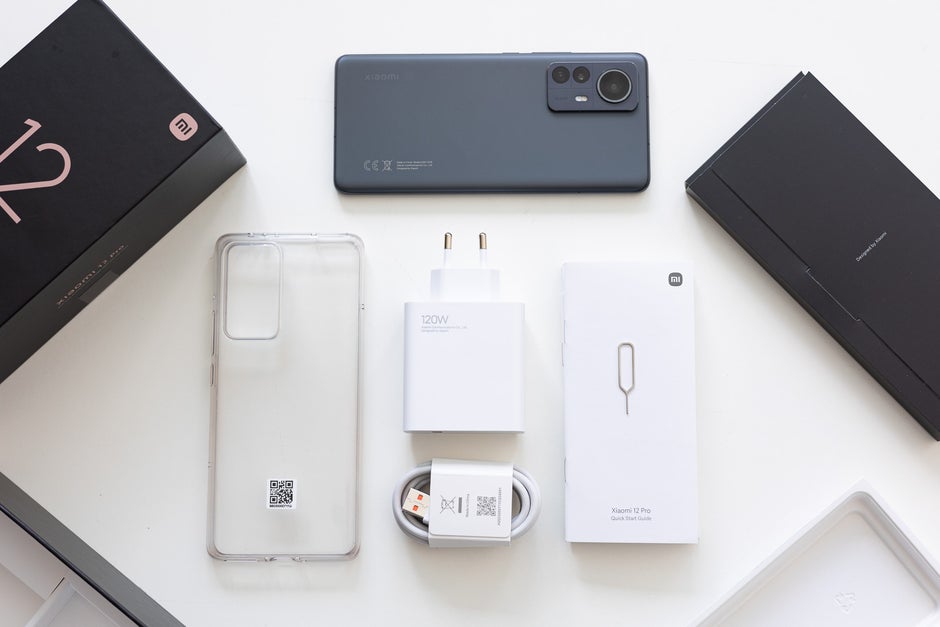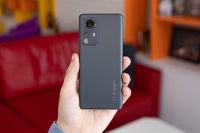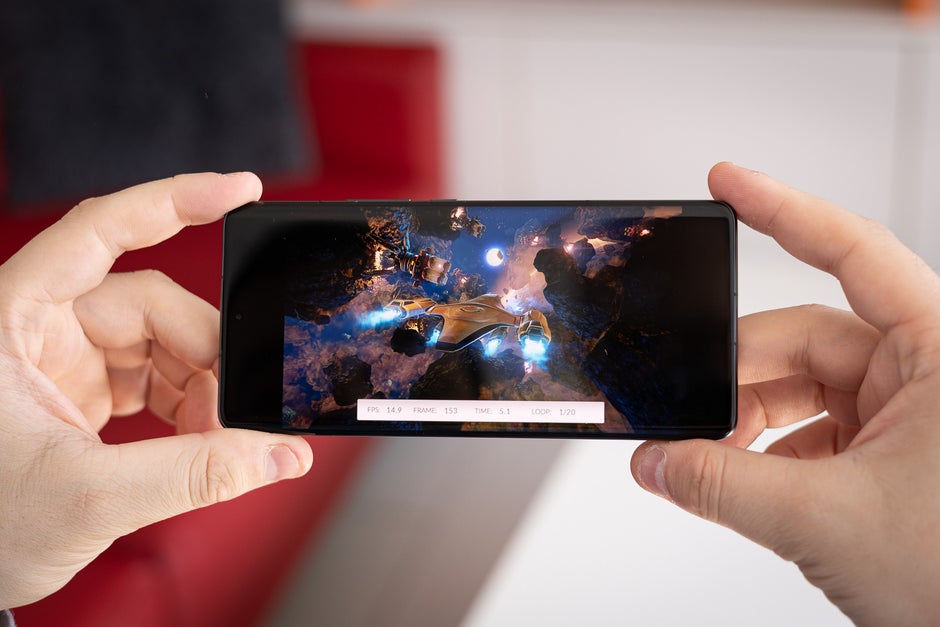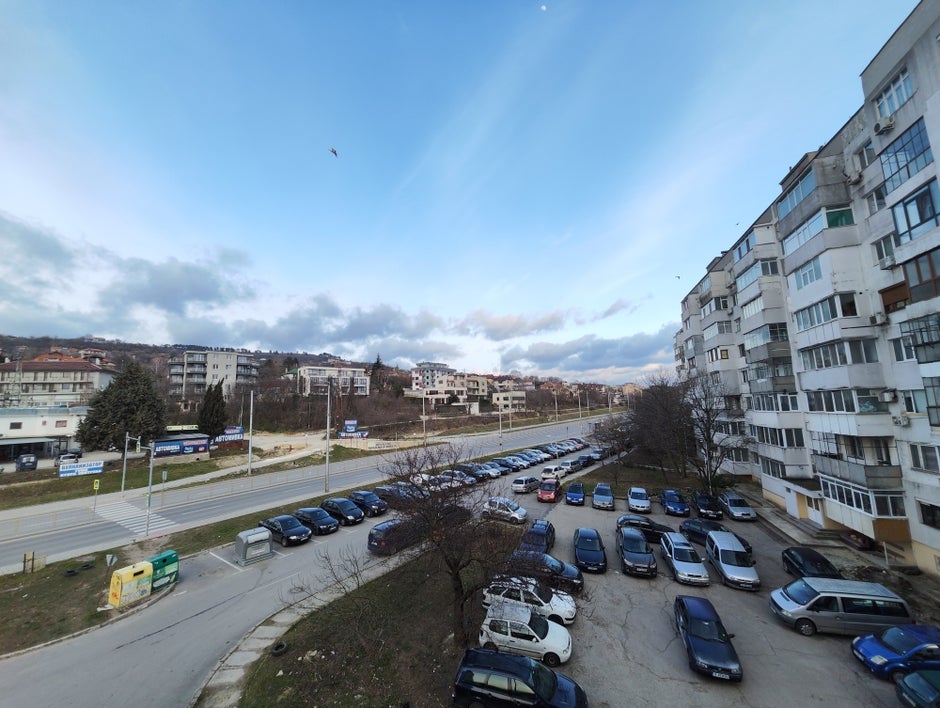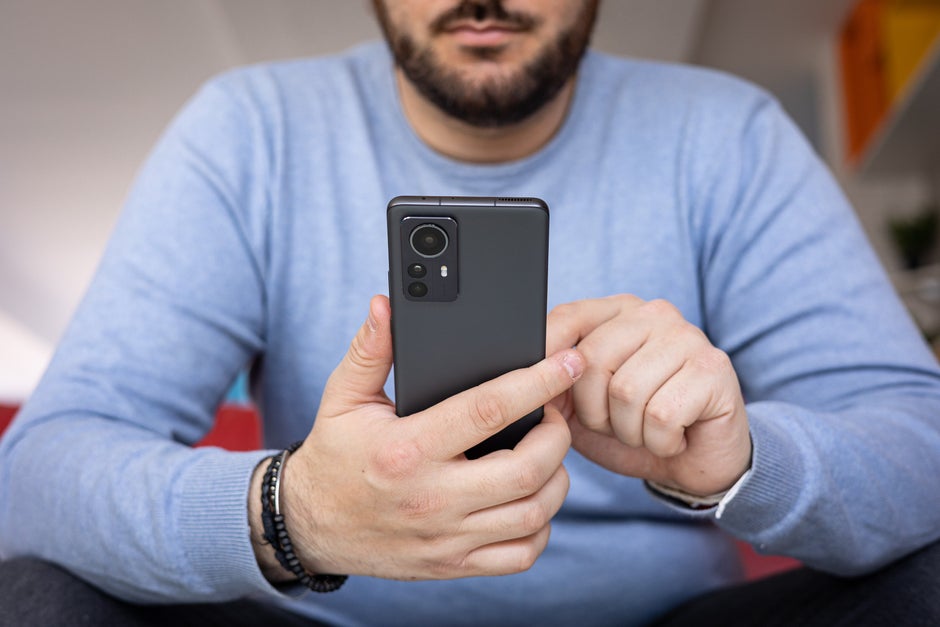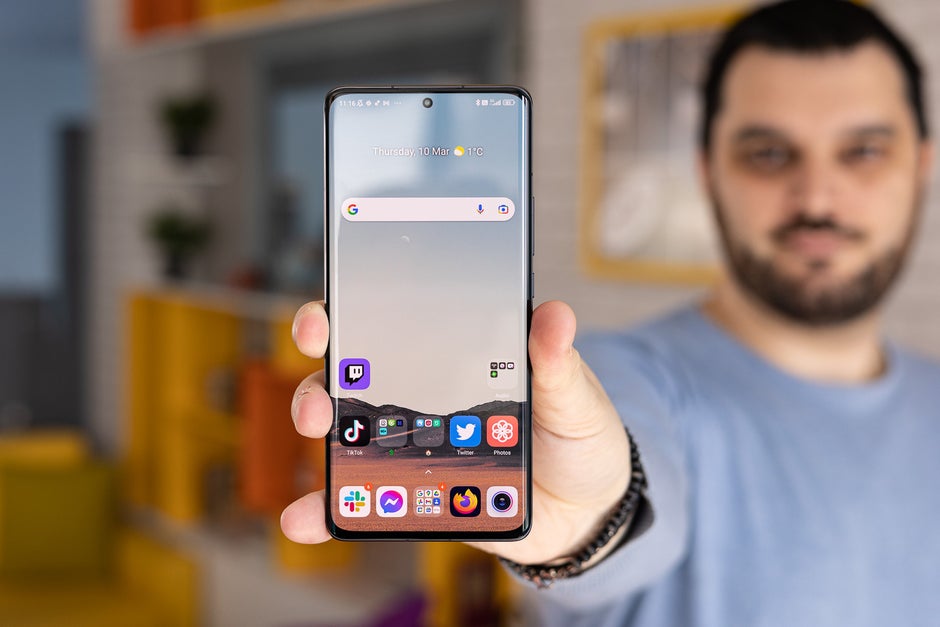The Xiaomi 12 Pro is the company’s latest flagship device that aims to solidify its positions in the high-end flagship segment. Xiaomi had a pretty strong 2021 with a bunch of flagship devices helmed by the astonishing Xiaomi Mi 11 Ultra. However, there’s no Xiaomi 12 Ultra (at least not yet), and the current best phone in Xiaomi’s arsenal is the Xiaomi 12 Pro that we have right here.
With top-of-the-line hardware, sleek design, and a price tag to match, the Xiaomi 12 Pro is certainly a noteworthy phone that aims to challenge phones like the Galaxy S22 Plus, S22 Ultra, or Pixel 6 Pro. And provided that you’re willing to get through the extra hoops of actually buying the phone in the US, it could definitely prove to be a great value for money.
Design and Display
From a design standpoint, the Xiaomi 12 Pro is an impeccable phone. Not only does it feel super-premium, but it also makes a stand by going against the tide of angular-designed phones with flat edges, Xiaomi has (fortunately) decided to take ergonomics into account when designing its latest darling. The result? A phone that’s a pleasure to interact with, especially if you go caseless.
The silky-smooth Gorilla Glass Victus glass at the rear feels great to the touch, but what I love most about the phone are the slightly curved edges that let your palm wrap securely around the phone and provide a reassuring grip. Moreover, they make the phone feel much more compact than it actually is, and rest assured, this one is a big boy. There’s no imposing camera island at the rear, making for a clean and stylish appearance. The phone just looks good, in a stealthy kind of way, especially in the Gray color variant that we have. Aside from that one, the phone also comes in Purple and Blue, and I’m sure those two look great in real life as well.
With a 6.73-inch display, the Xiaomi 12 Pro is by no means a compact device, but as mentioned above, doesn’t feel overpowering or too large for its own good at any occasion. On the contrary, that screen is a joy. It uses the 10-bit Samsung E5 OLED display panel and supports LTPO technology, meaning that it has a variable refresh rate that goes between 1 and 120Hz depending on the on-screen content.
By default, the Xiaomi 12 Pro is set at ‘Auto’ and automatically manages its refresh rate. You are unlikely to ever notice the refresh rates switchng or any lag incurring from that. If you wish so, you can set the display at a fixed 60 or 120Hz refresh rate, but I don’t see why you’d want to do that, except for energy-saving reasons in some extreme cases.
A respectable 480Hz touch sampling rate will scan the screen for input touches 480 times a second to ensure an immediate response and mitigate the risk of perceiving ‘visual lag’. As if that’s not enough, the panel is also exceptionally sharp thanks to the QHD+ resolution of 3200 by 1440 pixels, though by default it’s set at FHD+ and I quickly ended up reverting to that exact setting to make use of the extra battery savings.
Display measurements and quality
There are a bunch of controls and display modes that enable you to fine-tune the color temperature and vividness of your display. True, other Android manufacturers let you do the same, but the majority only let you choose between a ‘normal’ and a ‘vivid’ color mode. Meanwhile, Xiaomi goes the distance and offers a much deeper and richer array of options for tuning the display colors. There’s even an auto-tone display setting, similar to the one on the iPhone, which automatically tunes the color temperature of the display in accordance with the ambient lighting, but the feature isn’t working too good for me and often switches the temperature in unlikely scenarios.
Performance and Software
Has Xiaomi reined in the mighty Snapdragon?
The phone comes with the Qualcomm Snapdragon 8 Gen 1, an octa-core silicon built on a 4nm manufacturing process, which offers improved performance and energy efficiency in comparison with its predecessor, the Snapdragon 888, but also requires a much better cooling solution for the chipset to unleash its full potential.
I’d say that a good balance has been struck between the power efficiency, thermal throttling, and thin design of the phone. Under normal usage, the phone is a completely normal phone that flies through anything you might throw at it without any lag or stutter. It’s important to mention that you have a say at the overall performance of your phone.
By default, it’s in the “Balanced” setting, but you can also enable a mode that maximizes performance, which shouldn’t bode well for your battery life. I never felt the need to turn this setting on: the phone is fast enough in its default state.
However, running games or synthetic benchmarks will certainly make their presence known. Playing Minecraft (my favorite game to play on a phone) for upwards of half an hour will make the phone noticeably hot to the touch. Meanwhile, benchmarking the Xiaomi 12 Pro has been an issue: trying to run 3D Mark’s Wildlife Extreme stress test crashes after 10 loops or so when the phone overheats.
Memory-wise, the phone is available with 8 or 12GB of RAM and a single storage option: 256GB. There’s no microSD card slot, so you’re stuck with that much physical storage.
Traditionally powered by Xiaomi’s own MIUI skin, the Xiaomi 12 Pro comes with MIUI 13 on top of Android 12. It’s a rather distinct custom Android interface that’s quite different from other Android skins and definitely requires some getting used to if you’ve never used it. Still, almost every Android software feature that was ever devised can be found in MIUI. It certainly is quite feature-rich and at times a bit overwhelming, but my main issue with MIUI is that there are still some bugs here and there that mar the interface and lower the overall user experience.
Camera
The Xiaomi 12 Pro comes along with three cameras at the back—wide, ultra-wide, and 2X telephoto—all of which weigh in at the respectable 50MP. The main camera features a 1/1.28” IMX707 sensor with large 2.44μm pixels all housed underneath a 7-element lens with an F1.9 aperture. By default, the camera employs quad-pixel binning, which essentially means that it takes 12MP photos but benefits from better low-light sensitivity. If you wish, you can take 50MP photos, though. In fact, you can take 50MP photos with any of the rear cameras, and the same applies to night mode as well.
The ultra-wide camera has a 115-degree field of view, which is wide enough, but there are phones that go wider. A noteworthy mention is the OnePlus 10 Pro, which has an exceptionally wide ultra-wide camera that even has a fisheye mode. Finally, the 2X telephoto camera complements the camera loadout of the Xiaomi 12 Pro. It’s a 48mm equivalent weighing in at F1.9 that doesn’t offer much throw compared to other flagships, but is nice to have nonetheless.
Image quality
When it comes to image quality, the Xiaomi 12 Pro certainly has some serious chops. Detail is abundant, though a bit hazy when you really zoom in, but otherwise, photos turn out as sharp as the ones taken with, say, the Pixel 6 Pro or the Galaxy S22 Ultra. Yet, what’s certain is that things are looking up much better than last year’s Mi 11 family in terms of image quality, which is great to see!
Here’s the field of view of each camera at the back of the Xiaomi 12 Pro.
Colors are fairly accurate, albeit slightly on the colder side, lacking that palpable warm tint that is usually associated with iPhones. Typical of Xiaomi phones, the photos are a bit on the under-exposed side, which isn’t a bad thing at all and has its own artistic merit. At the same time, I feel that the Xiaomi 12 Pro doesn’t capture as much highlight information as I’d want it to, even though HDR is enabled. Overall, nothing too drastic that some careful post-processing can’t fix.
What grinds my gears is the fact that in many scenes, all three cameras might produce wildly inconsistent images that differ in overall looks and color temperature. The ultra-wide angle lens is decidedly ‘colder’, the main camera is noticeably warmer in comparison, and the telephoto tends to add a slight magenta tint that can’t be observed in images taken with the main camera.
The phone’s AI-assisted camera is smart enough to detect low-light scenes and turn on the respective camera’s night mode automatically. In low-light conditions, the Xiaomi 12 Pro does a great job at capturing good-looking photos. Even without any user input, a more than decent image will be taken even in very dark scenes, but if you manually enable Night Mode, you will usually get very decent and well-exposed photos. For example, the image below was taken with the only illumination in the room being the faint glow of a nearby street lamp.

Otherwise, you can expect the following low-light results from the Xiaomi 12 Pro.
Portraits are an area where Xiaomi still needs to do some work. Subject separation is sometimes good, but most of the the time leaves a lot to be desired.
Videos are looking good, too. Plenty of detail and nice colors. You can take HDR HLG videos if you wish so, but only up to 4K@30fps. You sadly can’t take HDR videos at 4K@60fps. If you feel the need, you can also take 8K@24fps videos, but the use case of those is pretty slim at the moment.
Audio Quality and Haptics
One of the intriguing features of the Xiaomi 12 Pro are its quad speakers, tuned by Harman Kardon and fully supporting Dolby Atmos. Yes, this phone has twice the amount of speakers that most flagship phones have these days, but is this necessarily better?
Hardly. In a direct comparison with the Galaxy S22 Ultra, the Samsung phone produces a meatier sound and also sounds a bit louder. The speakers of the Xiaomi 12 Pro sound a bit middy and flat with not a lot of bass. The software EQ found deep within the Xiaomi Settings is better than Samsung’s EQ and allows you to somewhat mitigate that, but we couldn’t arrive at a fully pleasing sound. So, probably don’t get this phone solely for the audio performance as it isn’t the second coming of Christ.
The haptics are okay, too. The phone produces immediate and exact vibrations that aren’t too strong, but you are unlikely to miss an incoming call or a notification. Xiaomi’s MIUI interface also makes good use of the vibrator inside the phone and providing a rewarding haptic feedback whenever possible.
Battery life and charging
The 4,600mAh battery at the back of the Xiaomi 12 Pro is actually the first single-cell battery unit that can be charged at up to 120W. While it doesn’t offer exceptional capacity, the battery helps the phone keep a sleek profile.
Xiaomi’s superfast 120W charger is making a comeback with the Xiaomi 12 Pro, and mind you, the charging brick is still included in the box. Thanks to it, the phone charges exceptionally fast—in our tests, it juices up from 0% to 100% in just 30 minutes, but charging it less than 20 minutes still nets you more than 80% of battery charge. That’s pretty fast, but it’s not as fast as some older Xiaomi phones like the Xiaomi 11T Pro, which charge faster due to their dual-cell battery design.
That said, battery life isn’t a very strong point of the phone. This is especially true if you make full use of the phone’s niceties, like 5G, QHD+ resolution, and 120Hz refresh rate. This setup wouldn’t last you very long, and you would certainly need a mid-day top-up if you intend on using your phone too much.
Still, the fast charging makes living with the phone quite easy… if you spend your day mostly at home. Whenever I see that the battery has dropped below a certain threshold, popping it on the charger for 10 minutes or so quickly replenishes a large chunk of battery charge. However, if you’re out and about, you’ll certainly need to employ a more frugal phone usage to conserve battery.
Fans of wireless charging will be delighted to find the fast 50W wireless charging on the Xiaomi 12 Pro while those eager to charge their compatible accessories with up to 10W thanks to the reverse wireless charging.
Summary and alternatives
With its starting price of $999 for the 8GB/256GB version of the phone and considering its decidedly flagship features, the Xiaomi 12 Pro is up there with the very best flagships. It certainly has what it takes to challenge any of the top contenders in its category, and despite the high price tag, it surely feels like the phone is a good value for money.
It’s got everything a modern Android flagship should have: super-fast charging, great camera, and a feature-rich interface. Still, I’d have loved a slightly better battery life, more consistent image quality when using the different cameras, and finally – better cooling.


